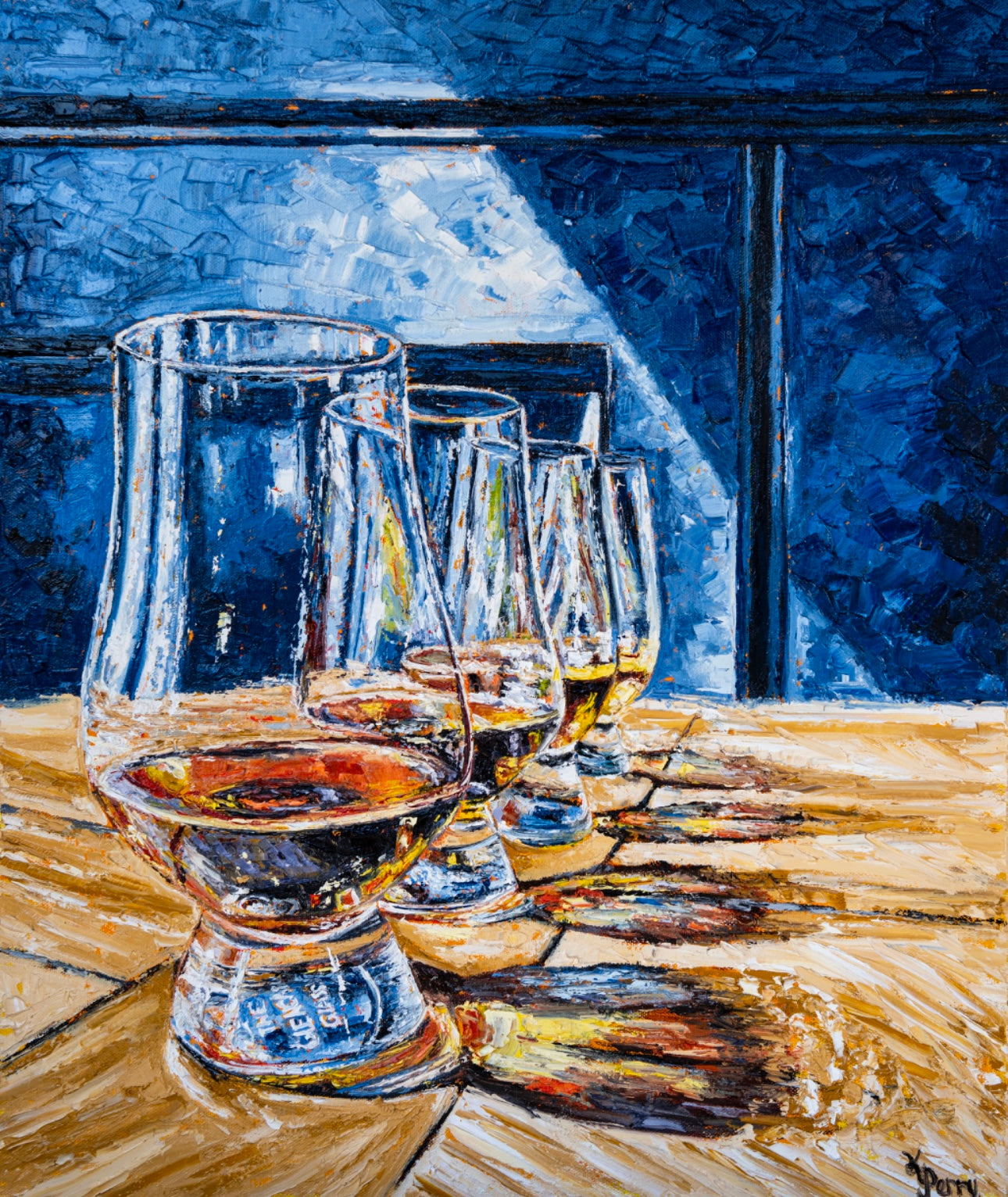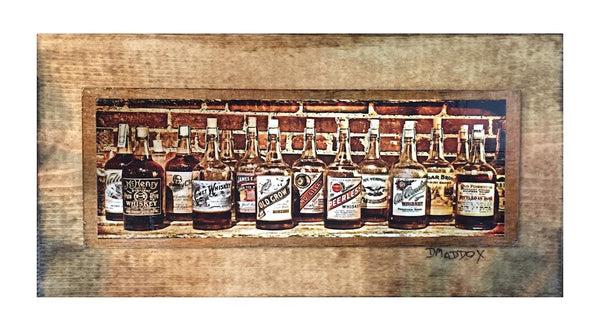Discover the World of Bourbon Art: A Journey Through Culture and Craftsmanship
Discover the World of Bourbon Art: A Journey Through Culture and Craftsmanship
Blog Article
The Relevance of Whiskey Art in Celebrating Heritage and Craftsmanship in the Beverage Sector
The intricate partnership in between bourbon art and the party of heritage and workmanship within the drink market can not be overstated. Through attentively made tags and bottles, bourbon brands encapsulate their historic origins and the artisanal skills that define their manufacturing approaches. This creative dimension not just boosts market charm but additionally functions as a channel for cultural narration, cultivating a deeper connection in between the craft and the consumer. As we discover the different facets of this subject, appealing concerns about the effect of modern fads on standard practices arise, triggering further exam.
The Historical Roots of Whiskey
At the heart of scotch's attraction lies an abundant tapestry of historic roots that map back to ancient people. The beginnings of scotch can be connected to the distillation methods of the Sumerians and Babylonians around 2000 BCE, where very early forms of fermented grain drinks started to emerge. It was in the Center Ages that the art of purification evolved substantially, specifically in Ireland and Scotland, leading to the creation of scotch as we recognize it today.
The term "bourbon" itself stems from the Gaelic word "uisce beatha," indicating "water of life." This expression emphasizes the cultural importance of scotch in Celtic cultures, where it was often related to routines, parties, and public bonding. By the 15th century, purification became an acknowledged craft within monastic areas, leading the means for the facility of legal distilleries.
As trade paths expanded, bourbon's appeal expanded, going beyond local limits and capturing the rate of interest of connoisseurs worldwide. Whiskey Art. This historical journey reflects not just the workmanship behind bourbon manufacturing but likewise its important duty in cultural and social contexts, marking it as a significant drink throughout background
Artistic Expression in Branding
Bourbon branding stands as an engaging crossway of creativity and commerce, where visual identification plays an essential role fit customer assumption. The aesthetics of bourbon tags, product packaging, and advertising materials reflect not just the brand's story but additionally its core worths and heritage. With artistic expression, distilleries share a story that resonates with consumers, stimulating emotions and sparking links.
The use of shade, typography, and imagery in branding offers to separate products in a saturated market. As an example, conventional concepts may stimulate a sense of credibility and craftsmanship, while modern-day designs can indicate advancement and forward-thinking. This calculated artistic direction boosts brand recognition and commitment, allowing consumers to build a personal connection with the bourbon they choose.
Additionally, imaginative expression in branding typically offers as a celebration of regional heritage. Distilleries regularly include local signs or historic references into their styles, developing a local color that invites customers to take part in a broader cultural experience. Eventually, the virtuosity behind whiskey branding not only enhances visual charm yet additionally enriches the overall narrative of the brand, promoting a much deeper admiration for the craftsmanship and heritage embedded in each bottle.
Craftsmanship in Bottle Design
The creativity obvious in bourbon branding expands past aesthetic identification to encompass the craftsmanship associated with bottle style. Each bottle functions as a vessel not just for the spirit within, but also for the story it tells regarding its custom, high quality, and origin. The design procedure calls for precise attention to detail, as elements such as closure, material, and form add substantially to the total assumption of the scotch.
Craftsmanship in bottle layout entails choosing premium glass that can improve the whiskey's shade and clearness, while also providing a responsive experience for the consumer. The silhouette of the container need to be both visually appealing and useful, commonly showing the heritage of the brand name. Lots of distilleries select unique forms or embossed logo designs that evoke a feeling of authenticity and background.
Additionally, the label layout and typography play a vital role in connecting the brand's story. Whiskey Art. A well-crafted container not only astounds the consumer's eye yet likewise enhances the brand's dedication to quality and practice. In this way, the workmanship of bottle style becomes a crucial aspect of the scotch experience, combining artistry with an extensive regard for heritage
Cultural Value of Whiskey Art
Commemorating practice and craftsmanship, the social significance of scotch art goes beyond mere aesthetics, intertwining with the historical and social narratives of the areas where it originates. Each bottle works as a canvas, portraying the special tales, folklore, and traditions that have formed local whiskey-making practices. The complex layouts frequently mirror the heritage of the distillers, including symbols and themes that reverberate with the culture and worths of their communities.

Additionally, bourbon art plays an important duty in communal celebrations and celebrations, offering as a tangible link in between people and their shared experiences. read this By appreciating the virtuosity in whiskey product packaging, consumers cultivate a much deeper understanding and regard for the craft, eventually improving their enjoyment of the beverage itself.
Modern Trends in Scotch Discussion
In recent times, the presentation of whiskey has advanced to reflect contemporary preferences and fads while still honoring conventional workmanship - Limited Edition. Distilleries are progressively concentrating on visual aspects that enhance the total drinking experience, bridging the space between heritage and Extra resources modernity
Innovative container styles have arised, frequently incorporating sustainable materials and creative labels that inform compelling stories. Numerous brands now collaborate with regional artists, infusing their products with special aesthetic expressions that reverberate with customers. Furthermore, limited-edition launches are usually packaged in collectible containers, including worth and allure for aficionados.

Verdict
In verdict, bourbon art offers as a crucial channel for revealing the heritage and craftsmanship fundamental in the beverage sector. Via complex branding, ingenious bottle designs, and culturally significant imaginative components, scotch brands effectively recognize their practices and link with consumers.


Workmanship in bottle layout includes choosing top quality glass that can enhance the bourbon's shade and clarity, while additionally supplying a tactile experience for the customer. In this method, the craftsmanship of container style becomes a vital facet of the here scotch experience, merging virtuosity with a profound regard for heritage.
In final thought, whiskey art offers as an important conduit for revealing the heritage and workmanship fundamental in the beverage sector.
Report this page